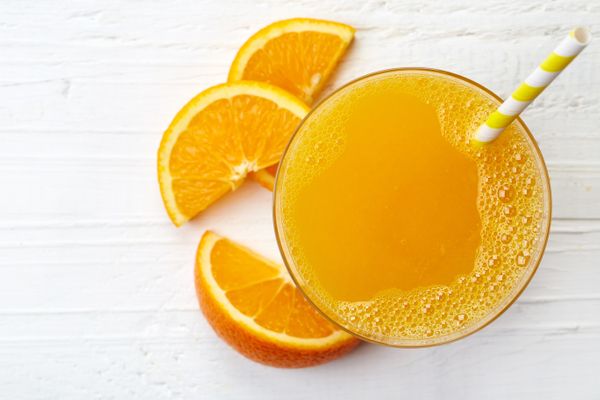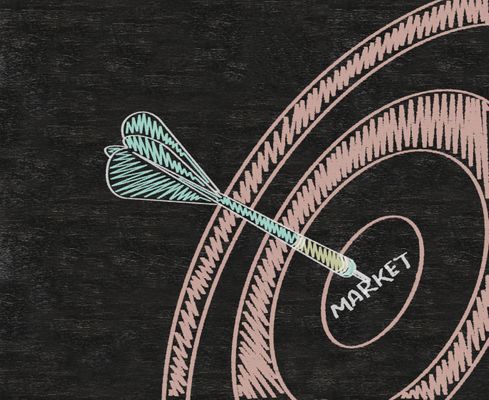2.2.10
Promotional Mix
Promotional Mix
Promotional Mix
Promotional mix is the combination of different promotional methods that a business uses. For example, a firm might advertise largely through TV, but also do some social media advertising and have sponsorship deals in place with athletes. Factors influencing the promotional mix are:


Finance available
Finance available
- Some firms will have much more finance (money) available to spend on promotions.
- Some promotional methods (e.g. TV advertising) are more expensive than others.
- Smaller firms with less finance are less likely to be able to afford TV advertising.


Competitor actions
Competitor actions
- The promotional mix of competitors might influence a business because they may want to reach consumers using the same channel as rivals.


The nature of the product or service
The nature of the product or service
- The type of product (or service) will influence which promotional method needs to be used.
- A technical product like a laptop may want to give consumers more information about their product, whilst a simple product like orange juice (Tropicana juice for example) may not need to give info.
- A fashion label like Hugo Boss does not have much information to communicate. How their products look is more important.


The nature of the market
The nature of the market
- As a market matures, the rate of growth changes.
- If a market is growing slowly, advertising may be less important.
- If a market is growing fast, then firms will be battling for market share and are willing to spend more on advertising as it will affect sales by a larger amount.


Target market
Target market
- A firm’s target market for a product (or service) will affect the promotional method that they use because different types of people use different platforms more often.
- A business wants to promote its product to its potential customers.
- A firm that produces women’s underwear will not usually want to promote their product to middle aged men.
Reasons for Promotion
Reasons for Promotion
There are 4 main reasons why businesses use promotion:


To inform/remind customers about the product
To inform/remind customers about the product
- A business cannot sell a product (or service) if no consumers know about it.
- Businesses must be able to inform their target market about their product (or service) and remind people, at the right time, in the hope that they will buy it.
- Reminding customers at the right time is key. There is not much point in promoting Christmas baubles on the 26th December.


To create or increase sales
To create or increase sales
- Informing consumers that are not aware of a business’ products can ‘create’ new sales.
- By constantly reminding existing customers about a product (or service) and its benefits, businesses can increase the sales from each customer.
- This is more likely to happen during the periods before short “sales windows” like Easter and Christmas.


To create or change the image of a product (or service)
To create or change the image of a product (or service)
- A promotion can have a large impact on how customers see a product. If a celebrity uses the product, a business can give the product a fun, luxury or innovative image.
- UnderArmour sponsored golfers like Jordan Spieth to create a youthful and cool image after they launched their golf and sporting wear ranges.
- A promotion can help to change customers’ perception of a product.


To persuade customers to buy the product
To persuade customers to buy the product
- Promotions are often used to advertise the benefits of using a product and to explain why you should buy it.
- These are attempts to persuade the customer that this is the best product for them.
1Investigating Small Business
1.1Enterprise & Entrepreneurship
1.2Spotting a Business Opportunity
1.2.1Customer Needs
1.2.2Market Research
1.2.3Market Segmentation
1.2.4The Competitive Environment
1.2.5Primary & Secondary Market Research
1.2.6End of Topic Test - Business Opportunities
1.2.7Application Questions - Business Opportunities
1.2.8Exam-Style Questions - Market Segmentation
1.2.9Diagnostic Misconceptions - Competition
1.3Putting a Business Idea into Practice
1.3.1Business Aims
1.3.2Business Objectives
1.3.3Business Revenues & Costs
1.3.4Costs - Calculations
1.3.5Revenue - Calculations
1.3.6Business Profits & Break-Even Analysis
1.3.7Profits & Losses - Calculations
1.3.8Interest - Calculations
1.3.9Cash & Cash Flow
1.3.10Cash & Cash Flow 2
1.3.11Cash Flow - Calculations
1.3.12Sources of Business Finance
1.3.13End of Topic Test - Business in Practice
1.3.14Grade 9 - Business in Practice
1.3.15Exam-Style Questions - Business in Practice
1.3.16Diagnostic Misconceptions - Profit
1.3.17Diagnostic Misconceptions - Company vs Business
1.3.18Diagnostic Misconceptions - Economies of Scale
1.3.19Diagnostic Misconceptions - Cash Flow
1.3.20Diagnostic Misconceptions - Break-even
1.3.21Diagnostic Misconceptions - Fixed Costs
1.4Making the Business Effective
1.5Business Stakeholders
2Building a Business
2.1Growing the Business
2.2Making Marketing Decisions
2.2.1Product
2.2.2Product Life Cycle
2.2.3Price
2.2.4Pricing Methods
2.2.5End of Topic Test - Product & Price
2.2.6Grade 9 - Product & Price
2.2.7Promotion & Advertising
2.2.8PR & Sales Promotions
2.2.9Sponsorship & Product Placement
2.2.10Promotional Mix
2.2.11End of Topic Test - Promotion
2.2.12Application Questions - Promotion
2.2.13Exam-Style Questions - Promotional Mix
2.2.14Place & Wholesalers
2.2.15Direct to Consumer
2.2.16E-commerce & M-commerce
2.2.17Diagnostic Misconceptions - Decreasing Price
2.2.18Diagnostic Misconceptions - Advertise vs Promote
2.2.19Diagnostic Misconceptions - Social Media
2.3Making Operational Decisions
2.3.1Job Production
2.3.2Batch & Flow Production
2.3.3Working with Suppliers
2.3.4Effective Supply Chains
2.3.5Just In Time & Just In Case
2.3.6Managing Quality
2.3.7Total Quality Management
2.3.8The Sales Process
2.3.9End of Topic Test - Operational Decisions
2.3.10Grade 9 - Operational Decisions
2.3.11Exam-Style Questions - Managing Stock
2.3.12Diagnostic Misconceptions - JIT vs JIC
2.4Making Financial Decisions
2.5Making Human Resource Decisions
2.5.1Organisational Structures
2.5.2Organisational Structures 2
2.5.3Recruitment
2.5.4Effective Recruitment
2.5.5Training a Workforce
2.5.6Motivating a Workforce
2.5.7End of Topic Tests - Human Resources
2.5.8Application Questions - Human Resources
2.5.9Exam-Style Questions - Human Resources
2.5.10Diagnostic Misconceptions - Owners vs Shareholders
2.5.11Diagnostic Misconceptions - Internal Recruitment
2.5.12Diagnostic Misconceptions - Employee Motivation
Jump to other topics
1Investigating Small Business
1.1Enterprise & Entrepreneurship
1.2Spotting a Business Opportunity
1.2.1Customer Needs
1.2.2Market Research
1.2.3Market Segmentation
1.2.4The Competitive Environment
1.2.5Primary & Secondary Market Research
1.2.6End of Topic Test - Business Opportunities
1.2.7Application Questions - Business Opportunities
1.2.8Exam-Style Questions - Market Segmentation
1.2.9Diagnostic Misconceptions - Competition
1.3Putting a Business Idea into Practice
1.3.1Business Aims
1.3.2Business Objectives
1.3.3Business Revenues & Costs
1.3.4Costs - Calculations
1.3.5Revenue - Calculations
1.3.6Business Profits & Break-Even Analysis
1.3.7Profits & Losses - Calculations
1.3.8Interest - Calculations
1.3.9Cash & Cash Flow
1.3.10Cash & Cash Flow 2
1.3.11Cash Flow - Calculations
1.3.12Sources of Business Finance
1.3.13End of Topic Test - Business in Practice
1.3.14Grade 9 - Business in Practice
1.3.15Exam-Style Questions - Business in Practice
1.3.16Diagnostic Misconceptions - Profit
1.3.17Diagnostic Misconceptions - Company vs Business
1.3.18Diagnostic Misconceptions - Economies of Scale
1.3.19Diagnostic Misconceptions - Cash Flow
1.3.20Diagnostic Misconceptions - Break-even
1.3.21Diagnostic Misconceptions - Fixed Costs
1.4Making the Business Effective
1.5Business Stakeholders
2Building a Business
2.1Growing the Business
2.2Making Marketing Decisions
2.2.1Product
2.2.2Product Life Cycle
2.2.3Price
2.2.4Pricing Methods
2.2.5End of Topic Test - Product & Price
2.2.6Grade 9 - Product & Price
2.2.7Promotion & Advertising
2.2.8PR & Sales Promotions
2.2.9Sponsorship & Product Placement
2.2.10Promotional Mix
2.2.11End of Topic Test - Promotion
2.2.12Application Questions - Promotion
2.2.13Exam-Style Questions - Promotional Mix
2.2.14Place & Wholesalers
2.2.15Direct to Consumer
2.2.16E-commerce & M-commerce
2.2.17Diagnostic Misconceptions - Decreasing Price
2.2.18Diagnostic Misconceptions - Advertise vs Promote
2.2.19Diagnostic Misconceptions - Social Media
2.3Making Operational Decisions
2.3.1Job Production
2.3.2Batch & Flow Production
2.3.3Working with Suppliers
2.3.4Effective Supply Chains
2.3.5Just In Time & Just In Case
2.3.6Managing Quality
2.3.7Total Quality Management
2.3.8The Sales Process
2.3.9End of Topic Test - Operational Decisions
2.3.10Grade 9 - Operational Decisions
2.3.11Exam-Style Questions - Managing Stock
2.3.12Diagnostic Misconceptions - JIT vs JIC
2.4Making Financial Decisions
2.5Making Human Resource Decisions
2.5.1Organisational Structures
2.5.2Organisational Structures 2
2.5.3Recruitment
2.5.4Effective Recruitment
2.5.5Training a Workforce
2.5.6Motivating a Workforce
2.5.7End of Topic Tests - Human Resources
2.5.8Application Questions - Human Resources
2.5.9Exam-Style Questions - Human Resources
2.5.10Diagnostic Misconceptions - Owners vs Shareholders
2.5.11Diagnostic Misconceptions - Internal Recruitment
2.5.12Diagnostic Misconceptions - Employee Motivation
Unlock your full potential with Seneca Premium
Unlimited access to 10,000+ open-ended exam questions
Mini-mock exams based on your study history
Unlock 800+ premium courses & e-books